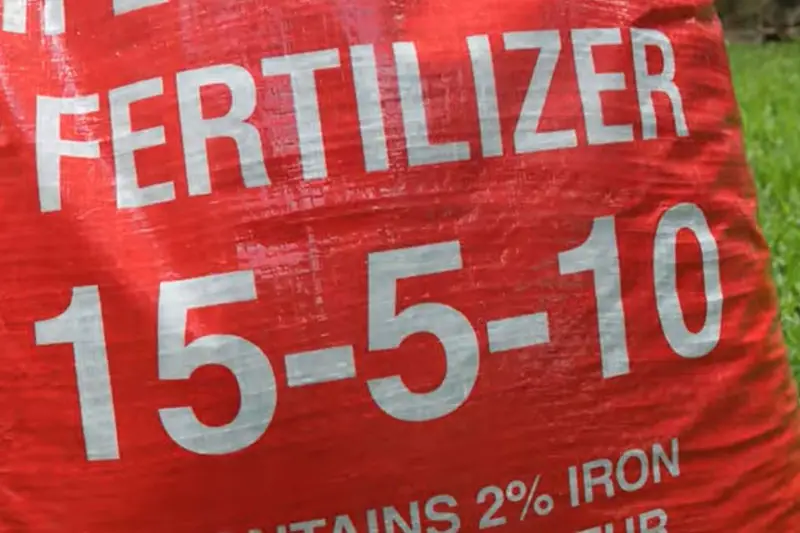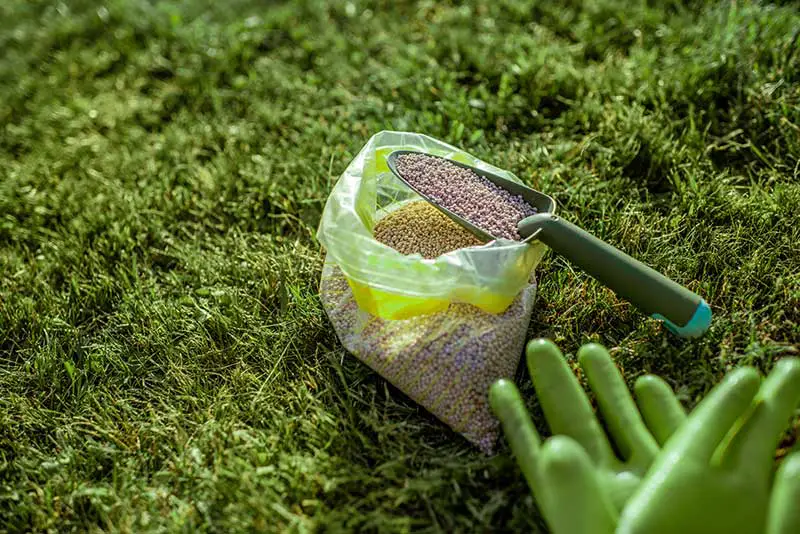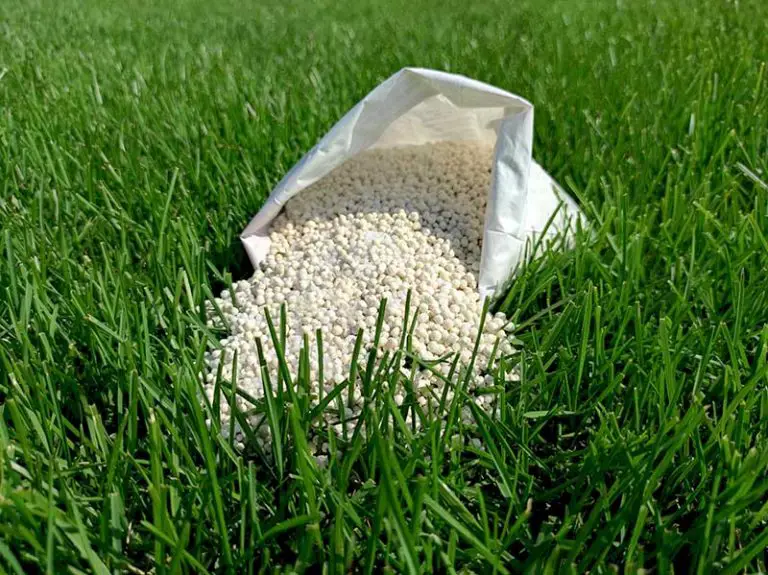NPK Meaning: What Do Fertilizer Numbers Mean?
There are many variables to consider when deciding which fertilizer would be best for your lawn or garden. And, with so many different fertilizers on the market, there are seemingly endless products to choose from. Fertilizer numbers provide an easy way to quickly compare products with each other, enabling you to purchase the ideal fertilizer for your plants’ nutritional needs.
Fertilizer numbers are a representation of the ingredients that any given fertilizer product contains. The numbers on fertilizer are also known as the NPK ratio; this is a string of three numbers in the format XX-XX-XX, indicating the amount of each primary nutrient within the fertilizer in question. NPK stands for nitrogen, phosphorus, and potassium, which are the three aforementioned primary nutrients that plants need to grow.
What Are the Numbers on Fertilizer?
The numbers on fertilizer are what’s known as the fertilizer’s NPK ratio (or NPK value). The NPK ratio of any given fertilizer represents the ingredients that the particular product contains.
All fertilizers come in different formulations, containing different quantities of their ingredients. It was therefore necessary for manufacturers to create a system to enable consumers to compare fertilizer products with ease. To solve this issue, manufacturers adhere to a system of fertilizer numbers, otherwise known as NPK ratios. NPK ratios are a string of numbers that all fertilizers have listed on their packaging; these fertilizer numbers essentially state the quantity of each primary nutrient that the product in question contains.

What Does NPK Stand For?
NPK stands for nitrogen, phosphorus, and potassium, with N, P, and K being the periodic symbols for each respective element. These are the three primary nutrients that all plants and grasses need to grow.
To look at each nutrient in more detail, nitrogen, phosphorus, and potassium are each necessary for different processes in plants:
- Nitrogen: Nitrogen is primarily responsible for foliar development. In plants, nitrogen drives the growth of stems and leaves, and in grass, it stimulates blade growth. This nutrient gives plants and grasses their green color, and is a key component of chlorophyll, supporting their processes of photosynthesis.
- Phosphorus: Phosphorus is the nutrient that drives the growth of strong, extensive root systems in plants and grass. This nutrient also encourages the healthy and abundant development of plants’ flowers and fruits.
- Potassium: Potassium is essential for many different functions within plants and grasses. One of the main jobs of potassium is to support the movement of water, nutrients, and carbohydrates within plant tissue. This nutrient also regulates photosynthesis and protein production. It is crucial to generally strengthen plants against disease.
As the three primary nutrients have different roles, plants need varying amounts of each nutrient at different stages of growth. For example, mature plants need more nitrogen for foliar development, whereas young seedlings have a greater need for phosphorus for root growth.
What Do the Fertilizer Numbers Mean?
In an NPK ratio, the fertilizer numbers represent the quantity of nitrogen, phosphorus, and potassium in the fertilizer’s ingredients. This is shown in the format XX-XX-XX on the packaging of the fertilizer.
An example of a balanced fertilizer that contains equal amounts of nitrogen, phosphorus, and potassium, would be one with an NPK ratio of 10-10-10. This indicates that the fertilizer contains 10% nitrogen, 10% phosphorus, and 10% potassium, with the rest of the fertilizer being filler material.
Why Are NPK Ratios Important?
As we’ve explained, NPK ratios provide an easy way to quickly determine and compare the nutrient content of different fertilizer products. These NPK values come in handy when deciding which fertilizer to use on your lawn or garden.
It’s crucial to pick the right fertilizer for your plants or grass to deliver the ideal balance of nutrients for its particular needs; this is why you must choose your fertilizer based on its NPK ratio. Different types of plants and grass have different nutrient requirements, and so do plants at different stages of growth. You need to choose the best fertilizer ratio to meet the needs of whatever you’re trying to grow.
Which NPK Ratio Should I Choose?
You have a few aspects to consider when deciding which fertilizer will have the best NPK ratio for your soil.
1. Consider the Plants You’re Growing
You should first consider what you’re fertilizing, whether it’s grass, fruit or vegetable crops, or flowering plants. It’s important to pick an NPK ratio that suits the typical nutritional needs of the plants you intend to fertilize.
Some types of plants will thrive with different quantities of nutrients to others. For example, the most important nutrient for mature grass is nitrogen, as it is for vegetable crops like tomatoes and lettuce. Flowering plants and prolific harvests instead have a higher need for phosphorus and potassium. Do some research into the nutritional preferences of your grass or plants before choosing a product with the best fertilizer numbers for its species.
2. Consider the Plants’ Stage of Growth
In addition to considering the type of plant you’re fertilizing, you must also factor in the stage of growth they’re at. Ideal NPK ratios differ depending on whether your plants are young seedlings or mature established plants.
Generally speaking, mature plants and grasses typically need fertilizers with a higher amount of nitrogen to support foliar growth. Young seedlings, on the other hand, usually prefer fertilizers with more phosphorus and potassium, as these nutrients drive root growth and stress resistance. There are specially formulated fertilizers called ‘starter fertilizers’ that contain the ideal balance of nutrients for young seedlings; all other established plants will benefit from a fertilizer product designed for mature growth.
3. Test Your Soil
Much of the nutrients that your grass or plants need may already be present in the soil. As soils differ from yard to yard, every lawn or garden will have a different nutritional make-up. You can determine what nutrients your soil already contains by conducting a soil test.
There are two ways in which you can test your soil. The first option is to test your soil yourself, using an at-home DIY soil test kit. These kits are simple to use and will provide you with basic data on the current pH and nutrient levels in your soil. Alternatively, you can send a sample of your soil to a lab for professional testing. The latter method will provide you with more detailed information about your soil’s pH and nutrient content.
From the results of your soil test, you can then determine which nutrients your soil already contains, and which nutrients you may need to replenish. From this information, you’ll be able to pick the best fertilizer ratio to suit your grass or plants and the soil they’re growing in. Your soil test will also reveal the pH level of the planting area; you may need to adjust the soil pH using lime or sulfur if it falls out of the optimal range for your plants.

What Else to Consider When Choosing A Fertilizer
Aside from fertilizer numbers, there are a few other factors you need to consider when choosing a suitable fertilizer.
Organic Fertilizers vs Synthetic Fertilizers
Fertilizers can either be made from organic, natural materials, or synthesized mixtures of chemicals. In general, it’s always best to use an organic fertilizer instead of a chemical product; organic fertilizers are much better for the environment and for the health of your lawn or garden. We have looked at both types of fertilizer in more detail below:
Organic Fertilizers: Organic fertilizers are made from entirely natural sources of the nutrients they contain. Some examples of these materials include animal manure, worm castings, seaweed, blood meal, and greensand. Organic fertilizers work to fertilize soil by releasing their nutrients gradually as the organic matter decomposes over time.
Synthetic Fertilizers: Synthetic fertilizers are synthesized chemical mixtures of their nutrients. These fertilizers typically contain chemical compounds like ammonium nitrate, ammonium phosphate, potassium sulfate, and superphosphate. Synthetic fertilizers are specially designed to be taken up readily by plants, working quickly to deliver their nutrients.
As they work so quickly, it may be tempting to use a synthetic fertilizer rather than an organic product. However, synthetic formulas provide little in the way of long-term fertilization after application; organic fertilizers, on the other hand, continue to fertilize the soil long after you add them to your lawn or garden. It’s also best to avoid chemical treatments where possible as they can cause harm to the local environment. Chemical fertilizers are also harsher on your lawn or plants and more likely to lead to fertilizer burn.
Granular Formulas vs Liquid Formulas
When choosing a fertilizer, another factor to consider is whether you want to use a granular or liquid formula.
Granular Fertilizers: Granular fertilizers are solid substances that typically require watering-in after application. You must work granular formulas well into the soil for them to work most effectively; this is easiest to carry out by using a rototiller to till the fertilizer into the top 6 to 8 inches of soil. As they must break down to take effect, granular formulas behave as slow-release fertilizers.
Liquid Fertilizers: Liquid fertilizers contain their nutrients in a liquid format and therefore require no watering-in upon application. They work their way down into the soil to reach the plants’ roots; the liquid format enables plants to begin taking up the nutrients immediately, making liquid formulas a faster-release type of fertilizer.
For general fertilization, it’s best to use a product with an organic granular formula. This type of fertilizer will support the health and fertility of your soil, both immediately and on a long-term basis. You can use a liquid formula to supplement your soil with extra nutrients when they need them; for example, an addition of liquid fertilizer during your grass or plants’ period of active growth provides a boost of nutrients when the plants need them most.






